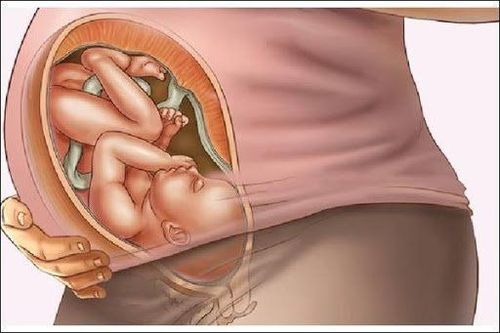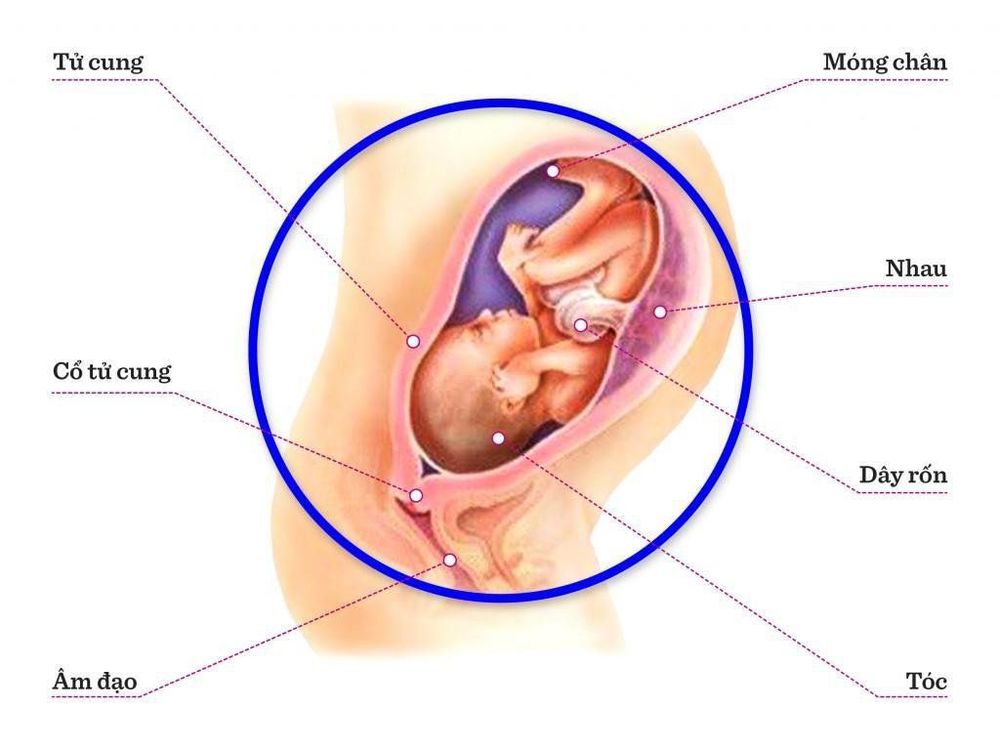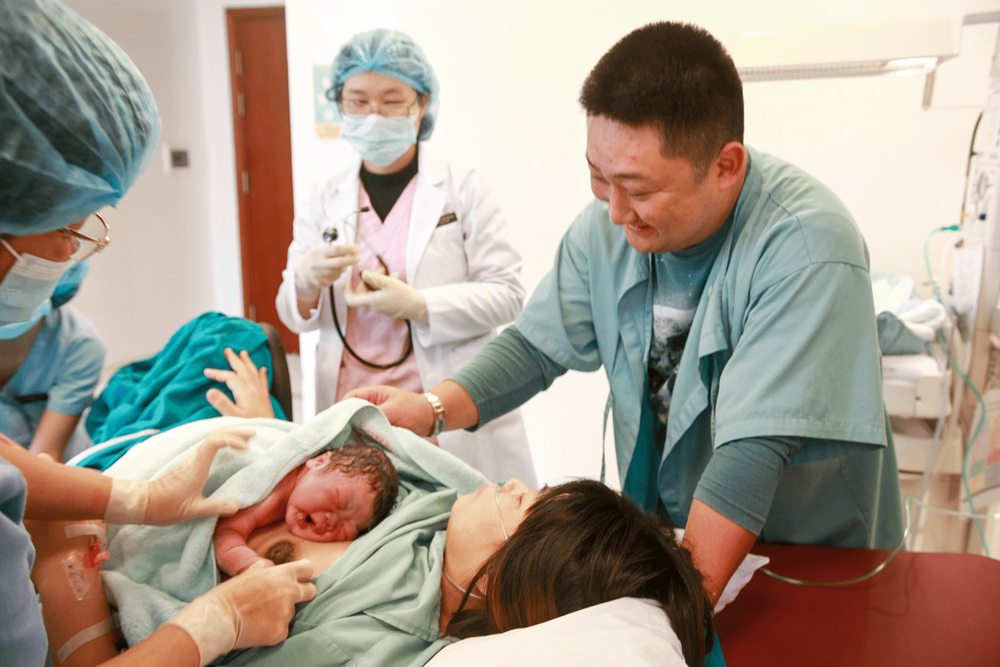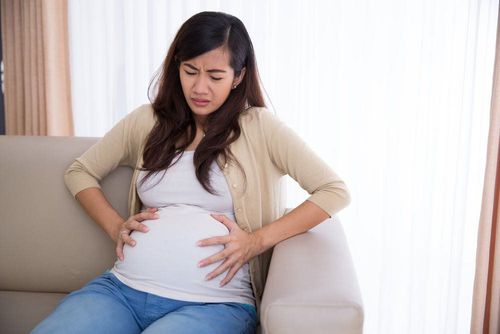This is an automatically translated article.
The article was professionally consulted by Doctor Vu Duy Thai - Department of Obstetrics and Gynecology - Vinmec Times City International Hospital.Turning the head of the fetus is a necessary sign, a preparation step to help the mother give birth easily. So is the fetus turning at 30 weeks early? Signs and how to handle it right? Below is the answer of Master, Doctor Vu Duy Thai at the Department of Obstetrics and Gynecology, Vinmec Hospital, Times City.
1. At what time does the fetus turn?
Fetal head turning is an important stage, when the fetus has a head-down position, the nape of the neck is turned towards the mother's abdomen, putting pressure on the uterus. When preparing to give birth, the uterus will expand, causing contractions and at this time, the little angels will be born in the most natural, safe and convenient position.So at what time of pregnancy will the fetus normally turn? Each fetus has a different time of turning, this depends quite a lot on how many times the mother has been pregnant.
Specifically, if the mother is pregnant for the first time, the fetus will usually turn around at 34 or 35 weeks of pregnancy. For mothers with a second pregnancy, the fetus usually turns later, from week 36 or 37. There are quite a few. the case of the fetus turning early from the 28th week of pregnancy.

The fetus only turns its head once and holds it until the mother gives birth, usually when the fetus begins to practice turning, it will notify the mother about the time to prepare for birth.
2. Do all fetuses turn their heads?
Normally, near the end of pregnancy, the fetus will automatically turn its head to prepare for the moment of birth, but not all fetuses turn their heads at the right time, sometimes they don't even turn their heads, causing the fetus to reverse, preventing pregnancy. back to normal childbirth.Determining the time when the fetus turns as well as the type of fetal position is extremely necessary, helping mothers to best prepare as well as choose the appropriate birth method.

2.1. Top hit
The first position is the usual type of fetal position, when the fetus is in the position of the head facing down towards the vagina, and the buttocks towards the mother's chest. The head position, the face or the crown are all the most favorable positions for the mother to give birth naturally, if the baby is not too heavy.2.2. The butt
The breech position is a condition where the baby's head is facing up and the bottom is towards the vagina. In this case, the fetus will be more difficult to deliver than the head, depending on the type of breech position that the doctor advises the mother to choose the method of cesarean section or vaginal birth.2.3. Oblique or horizontal
The oblique or horizontal position is the position where the back of the fetus is facing down, one shoulder blade can touch the "door". With this position, the doctor will be able to touch the baby's shoulder, and in this case, the mother can only have a cesarean section because the baby's organs are so large that it cannot be delivered normally.3. Problems with pregnant mothers or questions about the 30th week fetus
3.1. The development of the fetus week 30 Week 30, at this time the fetus is about 40.6cm long, weighs about 1.5kg, the size of a large pumpkin, the limbs or body are fuller. This is also the period when the fetus is in an accelerating pace to develop, and there are babies who can turn their heads to prepare for the birth stage.Week 30, the fetus has begun to wiggle a lot, somersault, kick, causing pregnant women to have pain or insomnia. But mothers can rest assured when this signal signals that the baby is growing healthy.

This sign is just because the baby is trying to turn, turn or move, at this time, the pregnant mother should relax, rest and replenish energy for the next labor. But if contractions are frequent and painful, mothers should be careful because this can be a sign of premature birth.
3.2. 30 weeks fetus still not turning, is it okay?
As mentioned above, each fetus has a different time of turning, some fetuses turn from 28 weeks, some babies don't turn until 36, 37 weeks. Therefore, if the fetus still hasn't turned around at 30 weeks, you don't need to worry too much, try to rest, eat, if it's 3-4 weeks and the fetus still hasn't turned, please come see the doctor. doctor for advice.3.3 The fetus has not turned, what should the mother do?

Limit sitting too much
Do not sit still too much but often commuting, taking breaks, exercising to relax the body and make it easier for children to turn their heads.
Put the knees lower than the buttocks
Sitting position with the buttocks high with a cushion or small pillow, or choose a front reclining chair, the knees lower than the hips will help the fetus turn its head more easily.
Lying on your side
Lying on your side not only helps mothers reduce pressure, makes blood and oxygen circulation easier, but also makes it easier for the baby to turn.
Fetal turning is very important, it directly affects the course of birth. In the event that the fetus does not turn, the birth is difficult, the pregnant woman will have to have a caesarean section to ensure the safety of both mother and baby. Therefore, in the last months, you should have regular prenatal check-ups to monitor the position of the fetus and take early intervention measures to help the fetus turn around, the birth goes well.
To protect the health of the mother and baby comprehensively as well as help the mother feel more secure during labor, Vinmec provides a package Maternity service. With this package, the mother will have regular antenatal check-ups and routine tests to monitor her health. The fetus is monitored for fetal heart rate and uterine contractions with an obstetric monitor at 37-40 weeks of gestation to predict the exact time of delivery. During labor, the mother will be given pain-relieving techniques during and after birth such as: epidural anesthesia, pudendal nerve anesthesia (applied to normal delivery), postoperative pain treatment (applied to childbirth). surgery). In particular, Vinmec is deploying cold plasma services to help wounds heal quickly such as: cesarean section, perineal stitches, baby umbilical cord, and lactation to avoid swelling, redness, infection, and dryness. , flat, beautiful straight edge, little pain, no bruising, no convexity.

Please dial HOTLINE for more information or register for an appointment HERE. Download MyVinmec app to make appointments faster and to manage your bookings easily.














